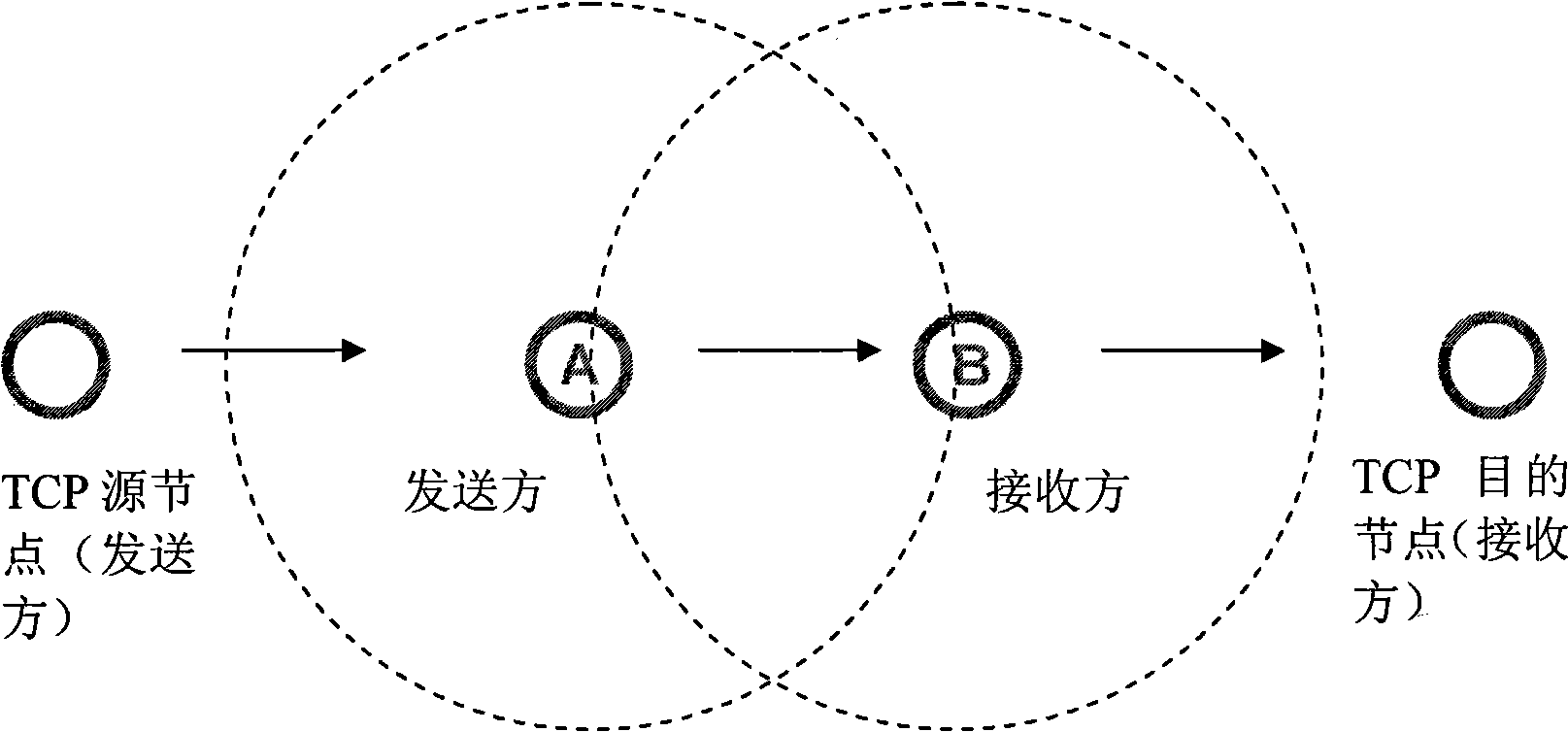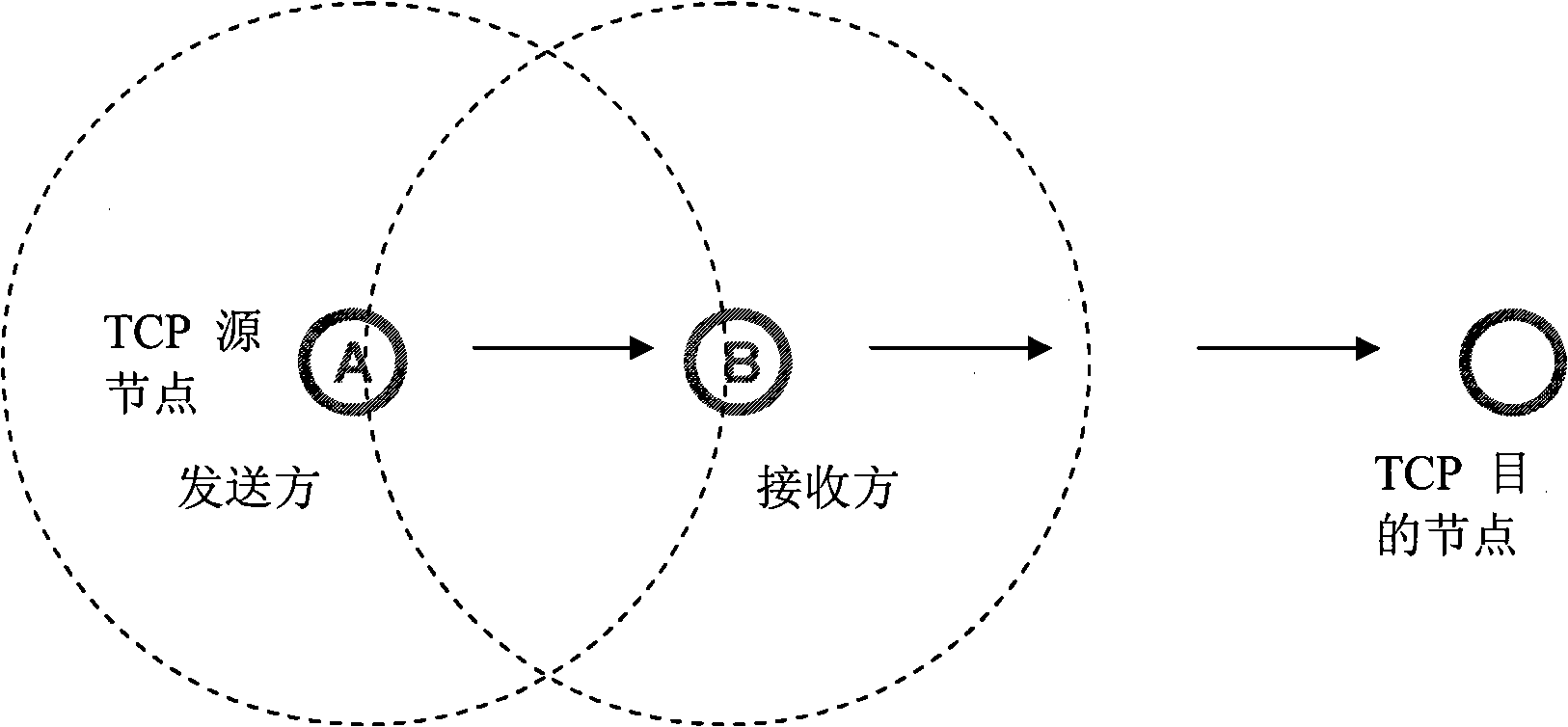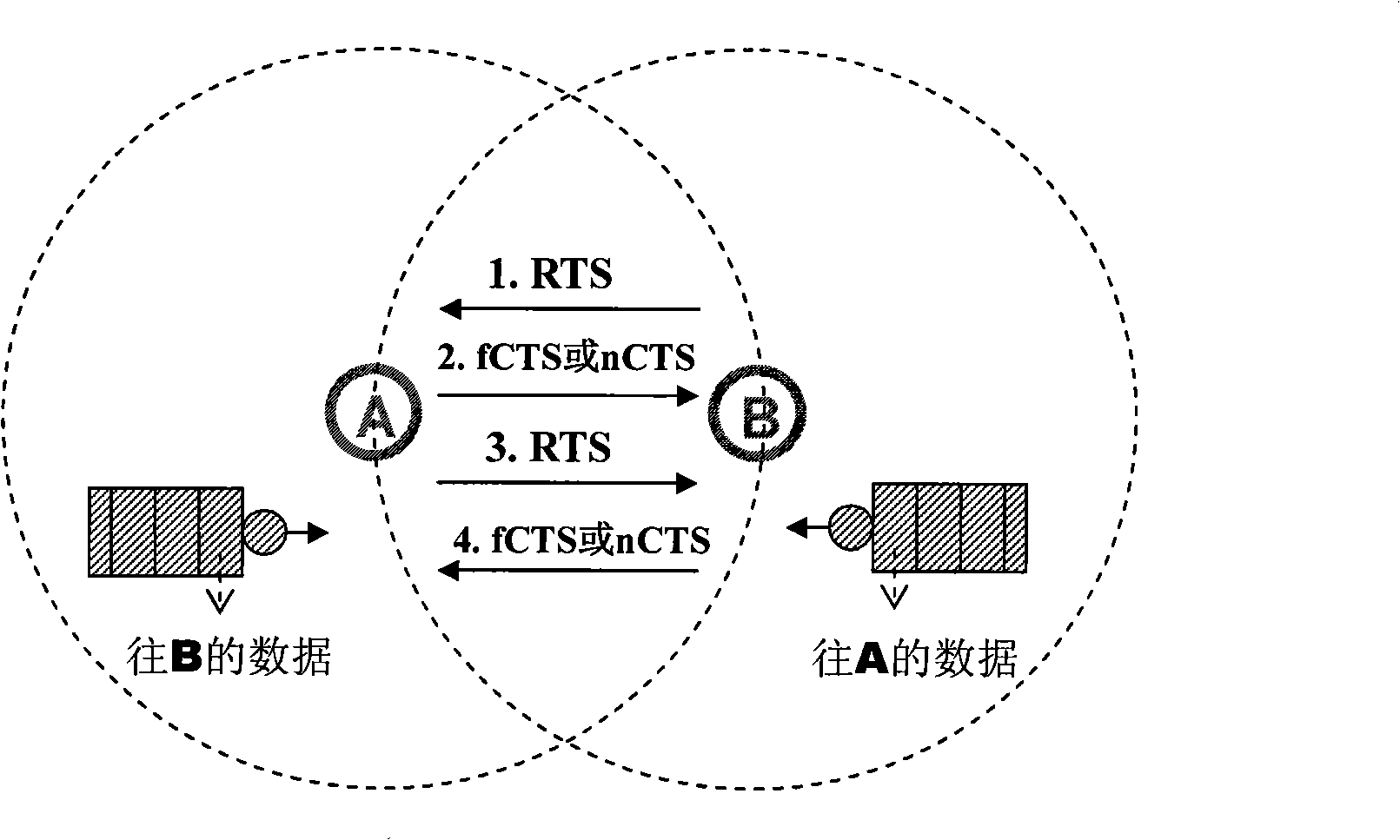Multi-hop wireless network congestion control method based on RTS/CTS mechanism
A multi-hop wireless network and congestion control technology, applied in the field of multi-hop wireless network congestion control based on RTS/CTS handshake mechanism, can solve complex problems, achieve low cost, avoid misjudgment, and reduce misjudgment effects
- Summary
- Abstract
- Description
- Claims
- Application Information
AI Technical Summary
Problems solved by technology
Method used
Image
Examples
Embodiment Construction
[0022] Although the RTS / CTS handshake mechanism is widely used to solve the problem of hidden terminals in wireless networks, it does not have the function of transmitting congestion information and controlling congestion information, nor is it used for congestion control. It works as follows:
[0023] Suppose there are two adjacent nodes A and B, such as figure 1 As shown, A is the sending node and B is the receiving node. According to the existing RTS / CTS handshake mechanism (original handshake mechanism):
[0024] 1. Before A officially sends a data packet to B, it must first send an RTS request packet to B;
[0025] 2. After B receives RTS, if B node thinks that there are no hidden terminals around it, B will return CTS to A; otherwise, B will not respond;
[0026] 3. Only after receiving the CTS returned by B, can A send data packets to B.
[0027] Hereinafter, the above RTS / CTS handshake mechanism is referred to as "original handshake mechanism".
[0028] On the bas...
PUM
 Login to View More
Login to View More Abstract
Description
Claims
Application Information
 Login to View More
Login to View More - R&D
- Intellectual Property
- Life Sciences
- Materials
- Tech Scout
- Unparalleled Data Quality
- Higher Quality Content
- 60% Fewer Hallucinations
Browse by: Latest US Patents, China's latest patents, Technical Efficacy Thesaurus, Application Domain, Technology Topic, Popular Technical Reports.
© 2025 PatSnap. All rights reserved.Legal|Privacy policy|Modern Slavery Act Transparency Statement|Sitemap|About US| Contact US: help@patsnap.com



